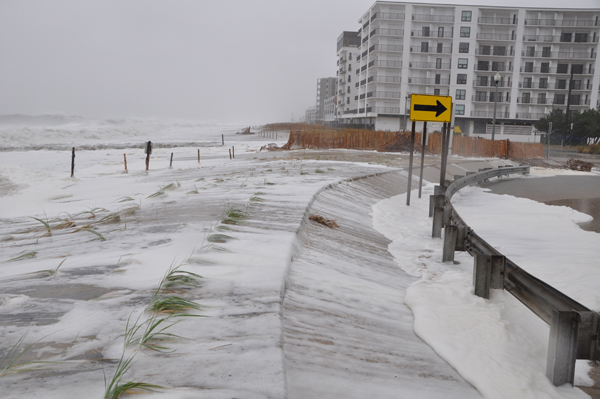
Hurricanes and hospitality
HRIM's DeMicco partners with Forecasting International on tourism study
9:08 a.m., Dec. 6, 2012--As Hurricane Sandy battered the East Coast in late October, members of the hotel community reevaluated trends the tourism industry can expect in the upcoming months.
Frederick DeMicco, ARAMARK Chair in Hotel, Restaurant and Institutional Management in the University of Delaware’s Alfred Lerner College of Business and Economics, teamed up with Marvin Cetron, president of Forecasting International, to research strategic tools following disasters.
Research Stories
Chronic wounds
Prof. Heck's legacy
The researchers examined traveling patterns that have the potential to impact the industry the strongest from Hurricane Sandy, including a loss of revenue in the areas most affected, a shift where people choose to travel in the country, and the potential for increased revenue from rebuilding sites.
“Trends in the hospitality industry depend on what goes on in the external environment,” commented Cetron. “The industry will find that more people will go to different places because Sandy wiped out some areas. Hotels will build up new areas over the affected areas, but there will be places where it remains too difficult to rebuild.”
The landmark storm is expected to cost the tourism industry billions of dollars from rebuilding costs for hotel and travel-related expenses. In response, hotels and restaurants are looking at strategies to improve natural disaster procedures.
“Knowing how much Hurricane Sandy impacted these areas, we wondered how hotels prepare and how to market to people coming to an affected city for a conference or a convention,” DeMicco said.
“This research gives organizations, convention centers and hotels a way to know where they sit and to be able to develop marketing materials to make people feel more comfortable visiting.”
Prior to this October’s storm, DeMicco and Cetron devised a tourism matrix for hospitality businesses to determine whether locations in certain areas of the country are particularly dangerous.
They created the matrix by categorizing tourism landmarks based on man-made problems, like crime or terrorism, and problems associated with natural disaster, like hurricanes and tsunamis. These locations were then ranked high or low on the matrix.
The tourism tools matrix ranked the top ten dangerous cities in the country based on the combination of man-made and natural disasters.
The number one most dangerous city, according to DeMicco and Cetron, is St. Louis, Mo. This city is responsible for the highest crime rate of any large city in the country and vulnerable to floods, hurricanes, tornadoes and environmental pollution. Los Angeles and Oakland, Calif., ranked as the second and third most dangerous.
DeMicco and Cetron noted there are many popular tourism areas susceptible to natural disasters, and that between those and man-made dangers, managers must be equipped with the tools to be prepared for emergencies.
According to the matrix, Hurricane Sandy’s impact does not make cities in the northeast more or less dangerous. However, many of the “what-if’s” hospitality managers wondered in the event of a natural disaster were tested during the storm.
Hurricane Sandy’s impact influenced DeMicco and Cetron to examine the ways natural disasters compare to man-made problems in making a tourism site more or less dangerous. Their findings will be presented in the next few months.
“The industry knew safety procedure before, but now it’s really being enforced,” said Cetron. “It gives us another chance to look at some of the things that went on before and make decisions that should have been made a long time ago. Hospitality managers will have to correct a lot of policy that was put off pre-Sandy. We can’t put this stuff off anymore.”
Article by Danielle C. DeVita
Photo by Wendy Carey








